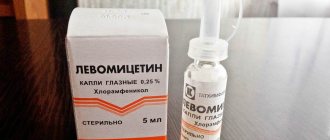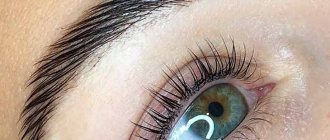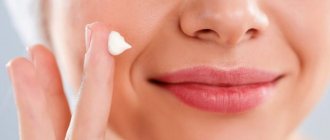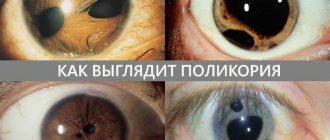Why tea
Allows you to relieve eye fatigue that occurs when working at a computer or other stress on the visual organs. Tea effectiveness:
- eliminates swelling;
- reduces allergy symptoms;
- relieves redness;
- treats inflammation and improves the appearance of the visual organs.
The advantages of the drink include accessibility and high efficiency. It is often used for the prevention and treatment of eye pathologies.
Tea soothes, relieves inflammation and has antibacterial properties. Scientists have found that green, black, oolong and puerh prevent the development of staphylococcal infections. Catechin suppresses viral infections (herpes).
You should not rely only on traditional treatment. It is necessary to supplement treatment with medications.
Tea is the most affordable and effective remedy for the treatment of conjunctivitis
Conjunctivitis is an inflammatory process in the mucous membranes of the eye, also affecting the eyelid. The disease is very common and it poses a danger to people of any age.
The causes of conjunctivitis are associated with bacterial, viral and allergic factors .
There are many methods offered by official medicine to treat the disease, but folk remedies are also effective for restoring the conjunctiva. One of the remedies that help with inflammatory disease is tea.
ontakte
Odnoklassniki
At the first symptoms of conjunctivitis, it is important to begin therapy as soon as possible.
The disease has characteristic symptoms:
- tearfulness;
- Pain in the eyes;
- swelling of the eyelids;
- redness;
- often the appearance of purulent discharge.
You can find tea in almost every home and use it as first aid for illness and for full treatment. The tea leaves contain tannins , which help relieve inflammation and swelling from the mucous membranes and eyelids.
However, it is worth remembering that this remedy will not help with bacterial conjunctivitis ; it will only slightly relieve the pathological processes in the eye.
also help with allergic conjunctivitis an additional remedy , since the main goal of treatment will be to eliminate the cause of the allergic reaction.
It is effective for viral types of disease.
For eyes use both black and green.
It is important that it does not contain additional additives or flavorings, as they can cause an allergic reaction and aggravate the condition.
There are tea leaves with such impurities as chamomile, rosehip , in this case the use is possible, since these natural additives also have positive properties for the treatment of conjunctivitis.
Freshly brewed loose leaf tea is preferable to bagged tea as it has a stronger effect, but brewing in bags is also suitable for eliminating the problem.
How to prepare tea leaves and how to rinse
Used as a cleanser and for compresses . Use a solution of medium strength , green or black type of this drink. To be effective, procedures are carried out frequently, up to washing every hour or two.
Photo 1. Brewing black tea of medium strength. This is exactly what you need to wash your eyes with conjunctivitis.
Preparation of infusion and treatment. Can I use tea bags?
one to two tablespoons of loose leaf tea or one bag to 200 ml of just boiled water . Leave for up to 5-10 minutes . Then carefully filter the infusion through a sieve or cheesecloth so that small particles do not get into it.
Cotton swabs or disks are generously moistened in the resulting slightly warm solution ( 36–40 degrees ) and the eyes are washed.
a separate new tampon for each organ of vision so as not to transfer the infection from one eye to the other and not aggravate the disease. It is unacceptable to use a disc or cotton wool left over from a previous use.
This method, such as washing, is equally effective and safe for both children and adults.
For a compress from the same infusion, you can use gauze or a bandage . The fabric is rolled up in several layers, and the compress is applied for up to 15 minutes , up to 5 times a day . Gauze cloth should not be used to wipe the eyes.
Attention! Small particles of tea leaves that get into the solution can injure the mucous membranes.
freshly brewed tea bags to your eyes , but in this case it is important to ensure that the bag is intact. Children should not be left unattended with tea bags on their eyelids.
A few more rules when using tea
- It is better to use large leaves.
- The need for hygiene procedures before treatment. Hands and face must be clean.
- It is better to use sterile cotton wool or tampons.
- It is preferable to rinse from the outer corner of the eye to the inner one .
- It is important to remember that tea is not a medical remedy, so consulting a doctor is mandatory to identify the causes and prescribe adequate treatment. When using tea as an additional remedy to medications, recovery will be quick and without complications.
Watch the video, which offers several recipes, including tea, for quickly treating conjunctivitis.
The tea should not be used if you have an allergic reaction to it, although this does not happen often. In general, it has virtually no contraindications for use. This folk remedy against conjunctivitis is effectively used as an additional method of treatment to the main one.
Rate this article:
Average rating: 3.5 out of 5. Rated by: 6 readers.
Share with your friends!
ontakte
Odnoklassniki
Source: https://linza.guru/konyunktivit/lechenie/narodnie-sredstva/chaem/
What tea is used to wash the eyes?
It is recommended to use fresh tea to wash the eyes. Buy without flavorings or other ingredients. Large leaf is best. There is no chemicals in it, and the composition is precisely known.
With flavors and dyes can lead to redness of the mucous membrane, its color and other unpleasant signs.
Varieties approved for washing the organs of vision:
- Black tea;
- green;
- white;
- oolong;
- Puer.
Yesterday's tea is not recommended. The prepared tea leaves should be fresh and strong.
Beverages
To improve vision and relieve eye inflammation, it is recommended to drink tea drinks with various herbs and beneficial ingredients. For example, blueberries, fennel, lemongrass and rose hips are perfect for such purposes.
Tea recipes to improve vision
- Five glasses of water need to be filled with four tablespoons of creeping wheatgrass. The infusion should be simmered until its volume is reduced by ¼. Drink this tea five times a day, one teaspoon.
- Dill seeds (1 teaspoon) are added to one cup of boiling water. You need to infuse the drink for a quarter of an hour and drink 1/3 of a mug for a month before main meals.
Precautionary measures
For compresses, it is recommended to use large-leaf tea leaves, since granulated tea contains fewer valuable components. In addition, dust can get into them, irritating the mucous membrane.
For the eyes, you need to select drinks without fillers and flavors. The procedures take no more than ten minutes. You should not make tea lotions at night, as they have a tonic effect.
If you follow all the rules, you will be able to cope with swelling, inflammation and redness in a short time.
How to properly wash your eyes with tea
If the procedure is performed incorrectly, there is a risk of harm to the visual organs. For rinsing you will need tea leaves, distilled water, and clean cosmetic sponges.
Algorithm of actions:
- Brew a strong drink. Brew in glass or porcelain containers, not aluminum. Leave to cool to an acceptable temperature.
- Soak a cosmetic sponge in the solution. Wrap a towel around your neck or perform the procedure over a bathtub.
- Apply the moistened disc from the outer corner of the eye to the inner corner. If there is purulent discharge, change the sponge and repeat the movement. And so - 3 times.
- Take a clean napkin or towel (soft, not previously used) and wipe your eyes. Do not press or rub too hard, you just need to get wet. Do not wash off with clean water. There will be no effect.
Do not put it in your eyes. Use only for washing by an adult and a child who understands the essence of the procedure.
Do not rinse immediately before bedtime. Tea contains caffeine, which interferes with proper rest.
Conjunctivitis: tea for treating the disease as compresses
To cure conjunctivitis, doctors recommend using tea and other traditional medicine only after consulting a doctor. However, an adult does not always have the opportunity and time to visit a specialist. There are recommendations regarding the use of tea that you can follow if you can’t go to the doctor.
Types of effective tea
For therapy to be effective and safe, you need to use natural green, black or yellow tea. However, the latter variety is extremely rare in stores. Baikhovy tea for washing eyes is the highest quality and healthiest. Long leaf tea is a raw material with individual large tea leaves, but the large-leaf variety is another type of medicinal drink.
Large leaf varieties can also be used - they are no less effective. You should only be wary of drinks that contain any additives (pieces of citrus fruits, flowers, and especially flavors or dyes).
Attention! Additional intestinal components, even if they are natural, serve as an allergen. Often, the use of such products worsens the course of conjunctivitis.
In addition to black, green and yellow tea, you can use ready-made pharmacy mixtures. The presence of these components in natural teas cannot be ruled out: linden blossom, rose hips, bird cherry flowers, as well as chamomile inflorescences and stems.
What are the benefits of tea for sore eyes?
High-quality tea contains phytoncides, which have bactericidal properties. When rinsing the eyes with tea against conjunctivitis, they inhibit the development of bacteria.
The active components included in each leaf relieve swelling and have a positive effect on the health of the mucous membranes. Natural tea leaves improve skin turgor.
You can use tea leaves in the treatment of bacterial or viral conjunctivitis in several ways, not necessarily only as compresses:
- Eye baths. First, the patient should wash his face and hands with neutral soap. Place brewed tea in a container of suitable depth and diameter, immerse your face in it and blink several times. It is important to use a decoction without specks and large leaves. After washing, blot the area around the eyes with a soft cloth. The same method can be used if foreign bodies get into the eyes. Avoid rubbing the skin around your eyelids.
- Washing. The most popular method of treating conjunctivitis is tea. The patient washes his face and then rinses his eyes with sterile cotton wool soaked in the prepared liquid. The head should be placed so that the liquid flows to the bridge of the nose, squeeze the cotton wool into the eye slit and draw it from the outer edge of the eye to the inner corner. This method removes harmful accumulations and helps with dry eye syndrome. Remember that using gauze and bandages on sensitive eyelid skin is not recommended.
- Instillation of tea drops. Use a strong brew on each eye, 2-4 drops 4-5 times a day. A clean pipette is required for instillation.
- Lotions with tea . The procedure helps remove remnants of makeup, eliminates bags and blue areas under the eyes. Cotton swabs or napkins are kept in a warm brew for 3-4 seconds and applied to the eyelids, taking a supine position. The eye muscles should be relaxed. You need to lie in this state for about 5 minutes. You can use tea bags for these purposes, but only without tearing them.
- Tea compress . Unlike lotions, they last a little longer - 10-15 minutes.
Next, you need to figure out what tea to wash your eyes with for conjunctivitis, and how to prepare it.
Methods of brewing tea
It is necessary to brew tea to treat conjunctivitis stronger than usual. To do this, take 200 ml of boiling water and 2 tbsp. l. sheet raw materials. You can use bags, but only high-quality ones. Infuse the eye wash for 10 minutes, then filter and cool to room temperature.
Important! It is necessary to strain the tea leaves even when using tea bags; for this, take several layers of gauze or bandage.
Then, cotton pads are moistened in the decoction that has cooled to 40-45 degrees, washed, or applied to the eyes. If the decoction is used as a rinse, you need to take a new swab for each eye each time. Rinsing and compresses can be done up to 5 times a day.
Rules for using tea
In order for rinsing your eyes with tea for conjunctivitis to be correct and effective, you must adhere to the following rules:
- before any hygiene procedures you need to wash your hands and face with soap;
- you need to choose sterile cotton wool and medical swabs, which are stored in tight packaging;
- Always wipe your eyes from the outer corner to the inner one;
- it is necessary to remember that using tea for conjunctivitis to wash the eyes is better with the combined use of medications aimed at eliminating the cause of the disease.
The best way to treat conjunctivitis with tea leaves is to treat it 5-10 minutes before instilling the main medicine. It is chosen based on the cause of the disease: viruses, bacteria, allergies.
Using tea leaves to treat children
In children, it is necessary to rinse the eyes immediately after washing in the morning, especially if a newborn child suffers from conjunctivitis. Before the procedure, wash your hands thoroughly and use only sterile materials. The brew should be weak - the standard recipe is diluted 4-5 times.
If a child's eyes are very watery, use herbal infusions with chamomile, linden, sage or calendula. You need to brew 1 tsp. mixture in a glass of boiling water. Leave the product for about an hour. If the child is more than 4 months old, then you can drop it into the eyes, if less, then just rinse it.
Remember! If crusts appear on the eyelids, or swelling and irritation or even purulent discharge develops, then it is necessary to stop rinsing with tea and consult a doctor.
You can use an infusion of black or green tea to prevent eye diseases in children and adults, especially during periods of increased stress during school or work.
Rules for the prevention of conjunctivitis
The following indications are used for prevention:
- if a person is at the computer, the eyelids are washed 1-2 times a day, this helps against dryness and infection syndrome;
- you can use the product to combat wrinkles, circles and puffiness;
- When tearing occurs, tea is used every 1-2 hours as a rinse.
In the form of compresses and lotions for relaxation, you can use portioned tea packs every 2-3 days after a hard day at work.
You cannot use tea leaves if you have mechanical injuries to the cornea, allergies to certain types of dry raw materials, or infectious diseases (you can check with your doctor).
For you: Instructions for using Miramistin for conjunctivitis
Source: https://immunoprofi.ru/lechenie/ispolzovaniyt-chaya-dlya-lecheniya-konyunktivita.html
Is it possible to wash your eyes with tea for conjunctivitis?
Conjunctivitis can be viral, bacterial and allergic. Most often the cause of the pathology is infection. Tea bags are permitted.
The tannins contained in it help in the fight against the disease. The main thing is not to use tea leaves with fillers, and let it steep for at least 2 hours before use.
If after two days there is no improvement, tea leaves alone are not enough; complex treatment is required, including medication.
How lotions are made
Tea compresses are beneficial and do not require significant investment or effort. In order for them to give the desired result, the following recommendations are taken into account:
- It is advisable to use large-leaf tea for brewing, which has not been subjected to heat treatment in production, so it retains the active substances and beneficial characteristics;
- Only regular tea is purchased, so it should not contain unnecessary additives, pieces of fruit, spices or flavorings;
- compresses are made in the morning or afternoon, since if they are done in the evening, this leads to an excessive tonic effect;
- Keep the bags on your eyes for a maximum of 20 minutes, otherwise the skin will darken.
Attention! To combat bags or bruises under the eyes, cold lotions are applied.
From tea bags
With the help of bags, compresses can be easily made to combat skin imperfections or diseases of the mucous membrane. Tea has antiseptic properties, so it easily relieves fatigue and inflammation. If a person is sick, then such compresses can help fight conjunctivitis.
When using tea bags, follow these steps:
- boiling water is poured into the mug;
- bags are dropped into it;
- cooled warm tea bags are placed over the eyes;
- They are left in this state for 15 minutes.
After just three procedures, a positive effect is noted. The sachets are safe to use for adults and children. During an exacerbation of the flu, it is advisable to use such compresses to prevent colds.
If you have to fight barley, then a warm bag is applied only to the sore eye, and it is advisable to do several approaches. Since tannic acid is present in the tea leaves, it has an antibacterial effect. Therefore, literally after one procedure, swelling is removed.
From loose leaf tea
A tea leaves are made from it, in which a cotton swab is moistened and applied directly to the eyes. Therefore, to create a compress, follow these steps:
- For 1 glass of boiling water, take 2 tablespoons of tea leaves;
- It is advisable to take green or chamomile tea leaves;
- after the infusion has cooled, cotton pads are dipped into it;
- The products are wrung out a little and then placed over the eyes.
This compress stays on the eyelids for about 10 minutes. If you use black tea, then it is advisable to use 3 tablespoons of leaves per glass of boiling water. But such tea leaves do not have the healing properties that are inherent in green leaves. Products usually contain dyes that change the color of the skin near the eyes.
From green tea
Using green tea leaves as a poultice is ideal for combating inflammation or swelling. Research shows that they contain polyphenols, which help maintain healthy and fresh skin.
To create lotions, tea leaves are made by pouring boiling water over the leaves. It takes about 30 minutes for the solution to cool completely. To enhance the effect, add a little honey or lemon juice to the brew. If the solution is used for washing, it relieves irritation and removes red spots on the skin. Special compresses are often made in which tea is combined with essential oils.
From power
It is considered a mysterious drink with healing properties. You can not only drink it, but also use it for compresses. It is made from tea leaves, but the main difference is in the processing method. The drink is represented by fermented tea leaves. It has a specific taste and smell, but is ideal for lotions.
To brew power, you use a small clay teapot that is filled with water. The container is boiled three times, and after each time a little water is drained. Next, the water is stirred in the center to form a funnel. It is into this that the prepared leaves are poured. After the liquid boils, the kettle is removed from the stove. You can use the drink for lotions after all the tea leaves have fallen.
How to treat bacterial conjunctivitis?
Drops and ointments with antibiotics help eliminate the symptoms of purulent conjunctivitis; in some cases, the doctor may prescribe corticosteroids. Children are prescribed antibacterial agents that are not absorbed into the blood, but act locally. Here are the drugs used in modern ophthalmology for the treatment of bacterial conjunctivitis:
Simple drops with one active antibiotic: “Cifran”, “Normax”, “Okacin”, “Ciprofloxacin”, “Tsipromed”, “Gentamicin”, “Norfloxacin”, “Tobramycin”. Combined eye drops with two types of antibiotics or corticosteroid hormone: Tobradex, Dexona, Maxitrol, Sofradex, Garazon. Antibacterial ointments: Framycetin, Tetracycline, Chloramphenicol, Sulfacetamide, etc.
The choice of drug depends on the type of bacterial conjunctivitis, the complexity of its course, and the age of the patient. It is unacceptable to choose treatments on your own, guided by advice from the Internet. Only a doctor can make a correct diagnosis and prescribe a drug that acts directly on the causative agent of the disease. Using the wrong medication can have negative consequences.











